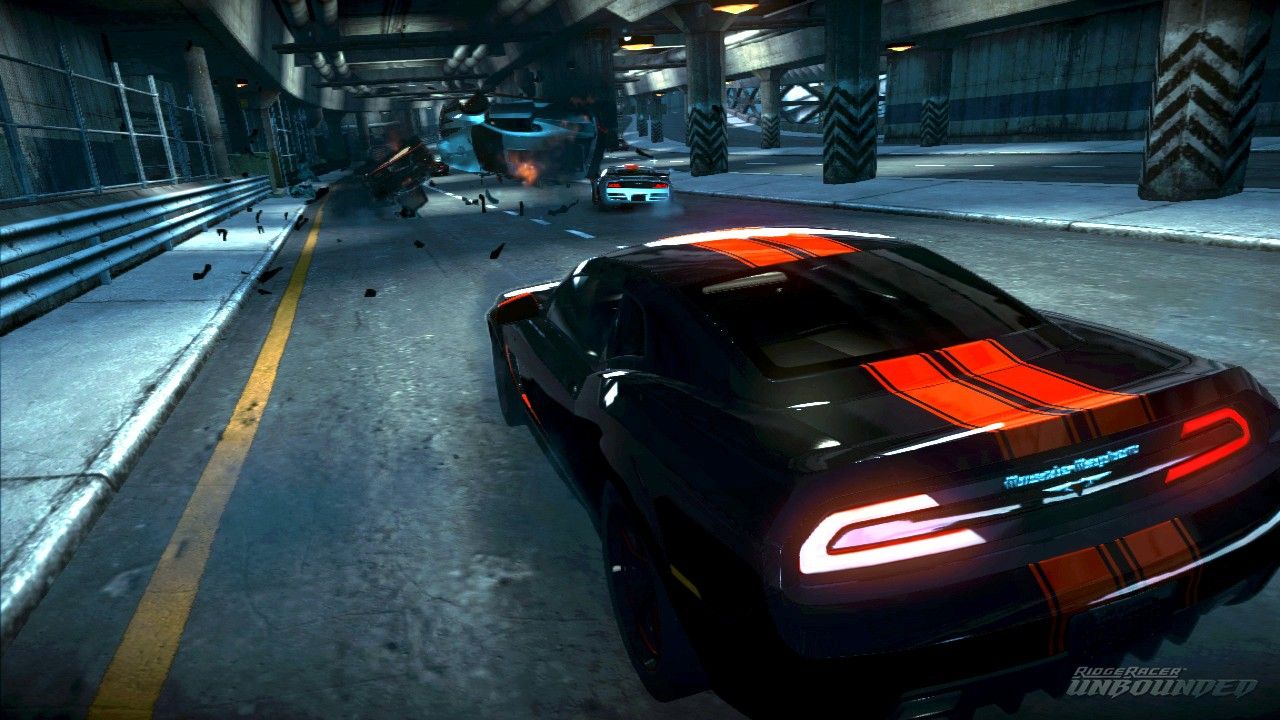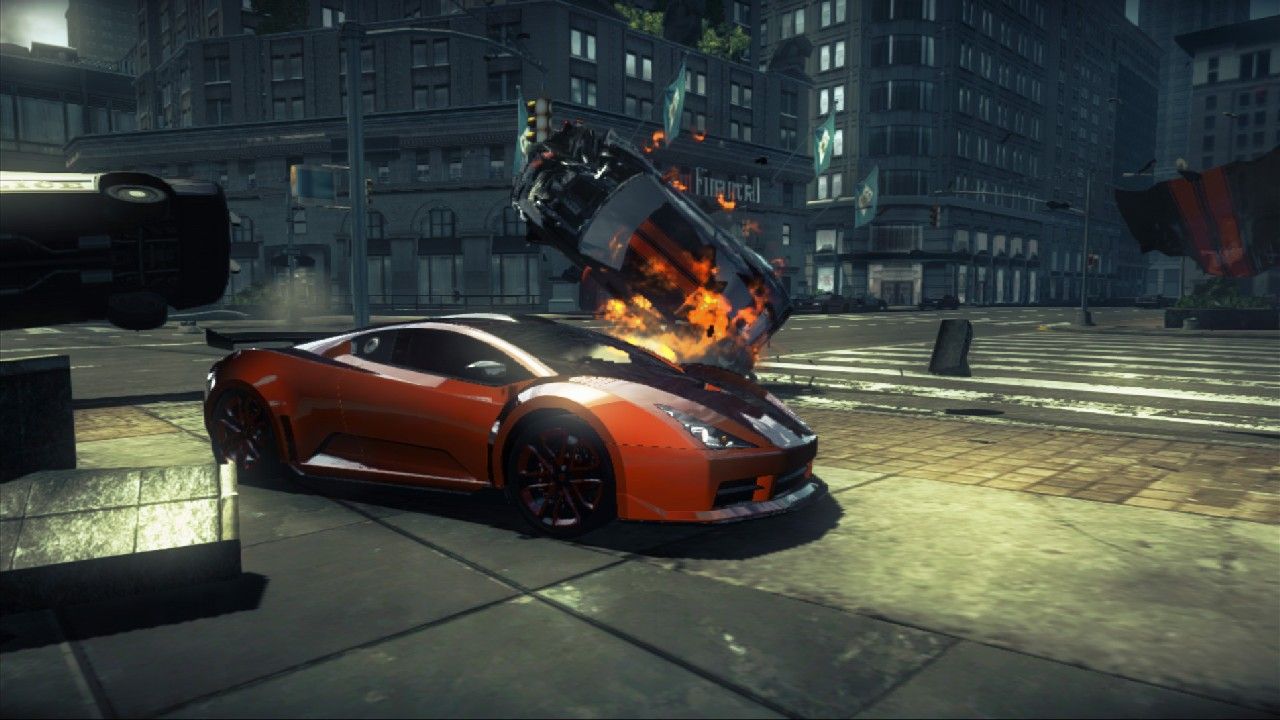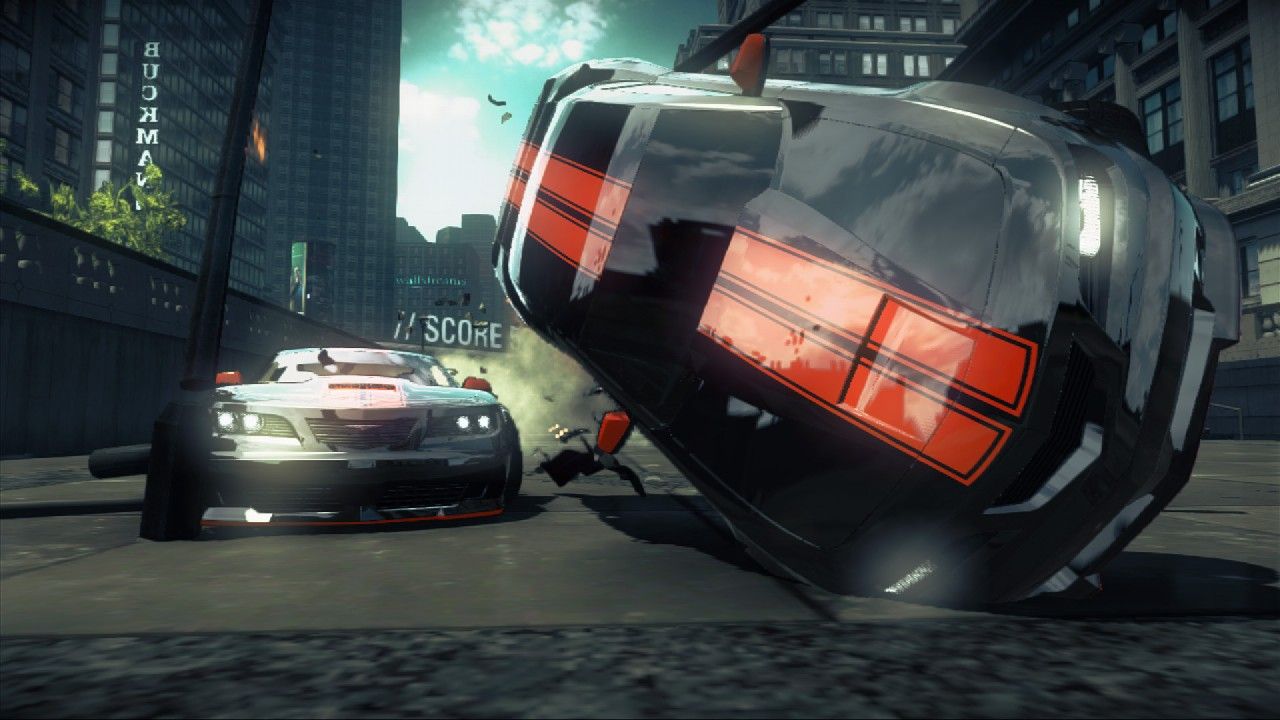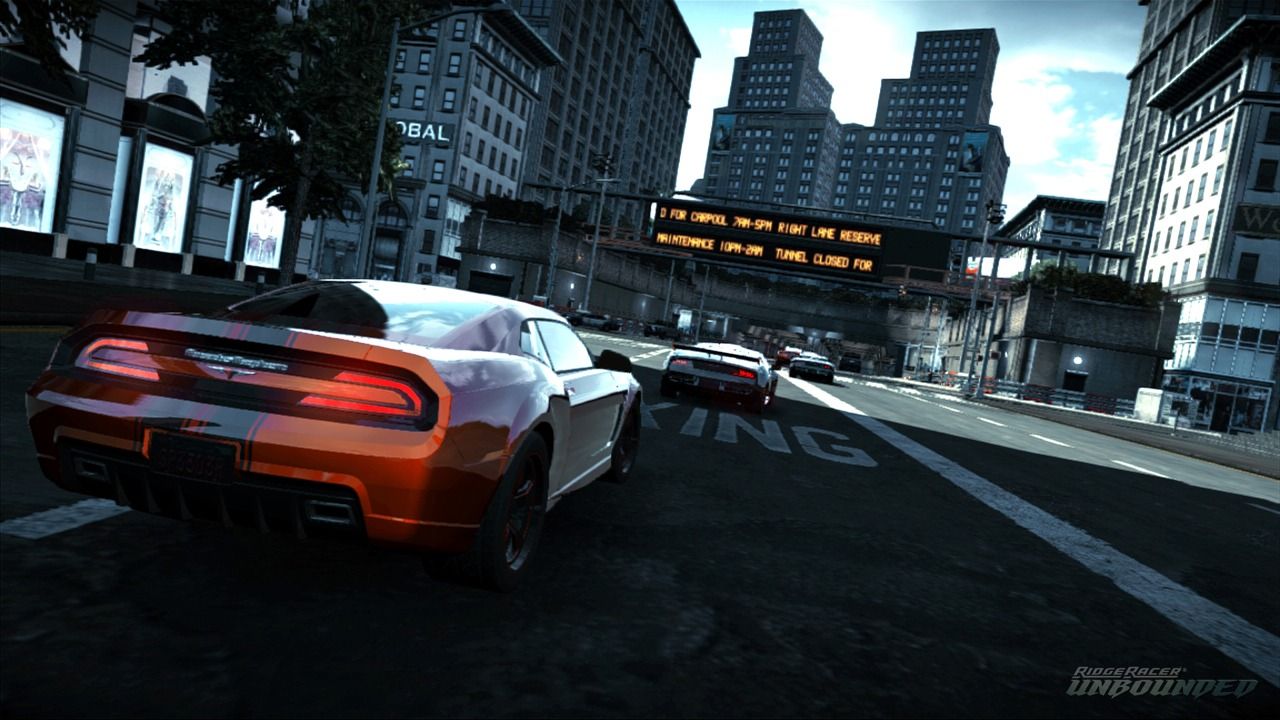Ridge Racer Unbounded Review
Posted by
SpectralShock
on
Racing games can often feel as if they are held hostage to their own genre. There’s only so much you can do with a game that involves cars and getting from point A to point B. Needless to say, there are some very talented and creative developers out there, that’s why we have everything from Gran Turismo and Forza to Blur and Twisted Metal. As the market grows, there’s bound to be cross-over and many racing games borrow some elements from one another – which is perfectly fine. Ridge Racer Unbounded is one such game, which attempts to take some of the unique presentation and gameplay elements found elsewhere and fit them into its own production. Unfortunately, the end result is far less than the sum of its parts.
The basic premise of the game is to progress through a career of a driver; there’s nothing superficial like a story or even characters. Main campaign mode sees you race through a number of various events, taking place within different city districts. The main goal is to dominate all districts and eventually the whole city. An XP point system oversees the whole experience, as the more points you get, the more cars and races are unlocked. It’s fairly simple stuff and the progression system is decently balanced.

Said experience points are earned through podium finishes as well as events during the race. Depending how well you do, experience points are awarded to progress your overall rank. All of the in-race events are also tallied, earning bonus XP for destruction, opponent takedowns, and so on. There are a few event types – Domination sees you race against others with a focus on vehicular and environmental destruction; Drift Attack tasks you with earning the highest score possible within the allotted time; Shindo racing is the most basic event type, with no destruction to speak of; and finally Time attack focuses on collecting icons scattered across the track in order to extend the clock. None of the events are particularly original, but they work at the basic level.
The game has a rather small number of cars, split into different categories depending on race type. They are all non-licensed vehicles, but it’s easy to see what real life counterparts they were modeled upon. Each comes with stats, such as speed, drifting ability, strength, and so on, but most of the time the only stat you will really care about is speed and perhaps acceleration. Vehicles are decently detailed; though don’t expect anything fancy like interior views. Damage model is very basic, the cars are either a little bent or in “full-on breaking into bits and pieces” mode. Worst of all, the cars simply lack personality and individuality, and driving one or another is often indistinguishable.

Let’s get down to the actual racing, then. Potential fans should note – this isn’t really a Ridge Racer game as you may have come to expect. With new developers Bugbear Entertainment, there’s not much familiarity that fans might have been hoping for. It’s still a decent racing game, mind you, but it certainly doesn’t concern itself with doing the series much justice. The arcade controls feel fine, and there’s not much skill required to navigate the tracks. At the center of it all is the drift mechanic, which feels very over the top and out of place with the control scheme, and is difficult at best. Sadly, it is a crucial element of the race, as you’ll read later on.
Unbounded seems full of seemingly unfinished design. The core experience plays out like a mix between Split Second and Burnout, with some FlatOut added to the mix. Sadly, all of the elements that are borrowed from those good titles are largely bare-bones here, awkwardly mashed together to create a barely functioning title that’s often difficult to enjoy. From Split Second, the game borrows the presentation elements and environmental destruction. However it’s not used to any great effect – the best you can do is take a few minor shortcuts, so it’s all rather uninvolving and doesn’t provide much use. There’s also nothing here the can come close to the sheer scale of Split Second’s finer moments. In fact, it’s sometimes a problem – there’s no indication of what objects are destructible. So some chest-high brick walls and concrete columns can be barreled through, but other walls and obstacles that look exactly the same, could just as easily end your race. It’s almost better to avoid causing destruction altogether and reduce the risk of a crash.
From Burnout (and perhaps FlatOut), Unbounded features the boost mechanic and a focus on taking out your opponents. But even this is not quite right. Boost can only be earned by drifting, tailgating, or jumping. The latter two are often difficult/out of your control, thus the only remaining way is drifting – however since the mechanic itself is so overly difficult, you’ll often be racing without any boost to spare. Even if you did try to perfect your drifting – most tracks simply don’t feature that many bends or corners to let you practice or earn any worthwhile boost. This leaves the game with a huge problem – there is no passive way to refill the boost (a problem many games have solved long ago), so you’re racing on empty very frequently.

Taking out other racers is most often only possible by activating your boost meter once it’s filled and by slamming into them. You can pretty much tag the other car at any angle or velocity and it will crash and burn – managing to make the whole mechanic feel underwhelming. Part of the reason for that is the AI. They aren’t bad, and they don’t rubber band, but they are just… there. Racing along on their own, not particularly bothered by the player’s actions. If you take out an opponent, they are quickly back in the race and boosting past you, even though there’s no conceivable way they could have refilled their meter.
Similarly, should you crash or be taken out, you’re pretty much looking at last place and a long road back to the front of the pack, that’s if you managed to get there at all. Whereas Burnout and Split Second were able to fine-tune the AI to give the player a chance of winning with multiple crashes, Unbounded has no such balance. Just like the other big selling point, environmental destruction, the game’s focus on car combat prompts the user to be extremely cautious instead of going all-out to cause mayhem. Essentially, as the main gameplay mechanics are in such an underdeveloped state, the players must choose between utilizing them or actually winning races. That’s a formula for disaster.
Aside from the campaign mode, you can also head online. Things do tend to get better here, as real opponents will actually make shortcuts (AI never does this), and utilize them. In addition to standard events set by developers, players are encouraged to create and share tracks using the game’s city editor. Similarly to Gran Turismo 5, you can put together large stretches of road and then arrange them in any order you see fit. It’s an easy and intuitive process, though the game did crash a few times just trying to start the editor. Playing through the campaign will unlock more elements to use, but overall the amount of assets is respectable. You can then upload your cities and tracks for the world to see, attempting to set or beat your own score. There’s some concern with lack of quality control – a large number of user created cities floating around are designed specifically to boost your XP with minimal effort by creating near-endless explosions, thus somewhat exploiting the tool. Perhaps most surprising of all is the lack of basic online leaderboards.
Ridge Racer unbounded is a decently looking game. The graphical options on PC are minimal at best, but at least things like AA and aspect ratio adjustments are included. The HUD in the races is lacking – which is both a positive and a negative. While racing, various messages such as laps remaining and how far behind or ahead you are get displayed across the environments – Splinter Cell Conviction style. It looks great and does work as a viable alternative to simply having a HUD element. On the other hand though, it sure would have been great to see a boost bar actually deplete during use so that you could estimate if you have enough left to tag the next opponent or create a shortcut – rather than hit a brick wall as your boost has just ran out. A basic map would have been beneficial as well.

There is a speedometer, but it’s unnecessary at best – mostly because the game lacks any real sense of speed. Going 50 or 100 km/h hardly feels any different. The tracks utilize mostly the same textures over and over, not that they can be seen very well through all that darn sun glare right into your eyes. Destroying the environment isn’t very detailed either; instead everything just explodes in a bit of dust and debris. Cars all mostly sound the same, most of the audio effects are basic, and the soundtrack is composed of very forgettable techno music. In other words, the game often looks and sounds rather low budget. At least the loading times are extremely fast.
So what is Ridge Racer Unbounded? Well, it’s not really a Ridge Racer game, nor is it a very enjoyable racing game either. Taking a few key mechanics from other series and attempting to use them is a sound strategy, had those mechanics not been stripped down and otherwise mangled with. As it stands, Unbounded is neither as cinematic as Split Second nor as fun to drive and crash as Burnout. It’s a game that has little identity, beyond its important yet frustrating drifting mechanic. There aren’t issues on the technical front – but again, nothing stands out either. It’s a game that’s tough to recommend – the elements included should have created a fun game in theory. But in reality, Ridge Racer Unbounded is just plain and rather uninspired.
